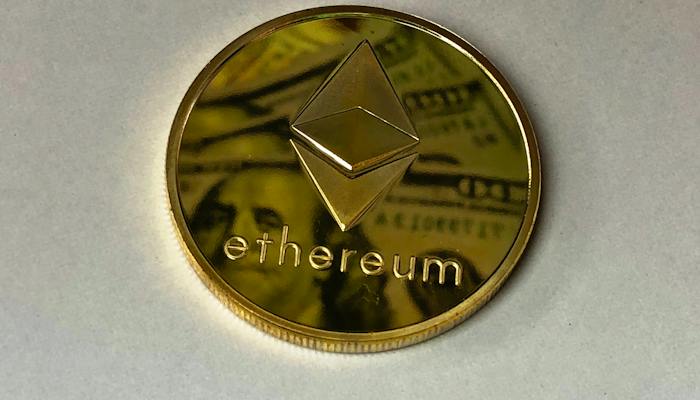Food safety and traceability are paramount concerns in the modern food industry. Consumers demand greater transparency and accountability, while regulatory bodies impose stricter requirements on food producers. To address these challenges, blockchain technology, with Ethereum at the forefront, is revolutionizing the way we ensure food safety and traceability. In this article, we will delve deep into the subject, exploring the complexities of the food supply chain, the role of blockchain technology, and how Ethereum is leading the way in this transformative journey. Want to be a pro at ETH investing? Stop guessing and visit Ethereum ProAir which will connect you with education firms that can change the way you invest.
Understanding the Food Supply Chain
Complexities of the Global Food Supply Chain
The food supply chain is a vast, intricate network that spans the globe. It involves numerous stakeholders, from farmers and producers to distributors, retailers, and consumers. Each step in the chain introduces potential risks and challenges related to food safety and traceability.
Challenges and Risks
- Contamination and Outbreaks: The frequent occurrence of foodborne illnesses and outbreaks highlights the vulnerability of the supply chain.
- Counterfeiting and Fraud: Fraudulent practices, such as mislabeling and counterfeit products, compromise traceability and consumer trust.
- Inefficiency: Traditional paper-based record-keeping systems are error-prone and inefficient for tracing products.
- Information Asymmetry: Lack of transparency and information sharing hinders swift responses to contamination incidents.
The Need for Transparency and Accountability
Transparency and accountability are critical to addressing these challenges. Consumers want to know where their food comes from, and regulators require accurate, real-time data to ensure compliance with safety standards.
- How to Accept Ethereum Payments Safely
- Ethereum Price Analysis: Factors Influencing Its Fluctuations
Blockchain Technology in Food Traceability
How Blockchain Technology Works
Blockchain is a distributed ledger technology that enables secure, transparent, and immutable record-keeping. It operates as a decentralized database that records transactions across a network of computers. Each transaction is bundled into a “block” and added to a chronological “chain.”
Benefits of Blockchain for Enhancing Food Safety
- Real-Time Tracking and Monitoring: Blockchain enables real-time visibility into the movement of food products across the supply chain.
- Immutable Record-Keeping: Once data is recorded on the blockchain, it cannot be altered or deleted, ensuring data integrity.
- Fraud Prevention and Detection: Blockchain’s transparency makes it difficult for bad actors to manipulate records.
- Enhanced Consumer Trust: Consumers can access detailed information about the origin and journey of their food.
Case Studies
- Walmart and IBM’s Food Trust: This initiative uses blockchain to trace the origins of products and expedite recalls.
- Nestlé’s Use of IBM’s Blockchain: Nestlé successfully employed blockchain to trace the source of ingredients in certain products.
Ethereum: A Platform for Food Traceability
Introduction to Ethereum
Ethereum is a decentralized, open-source blockchain platform that supports the creation of smart contracts. Smart contracts are self-executing agreements with predefined rules. In the context of food traceability, Ethereum’s programmable capabilities offer unique advantages.
Smart Contracts and Their Role
Ethereum’s smart contracts enable automation of various supply chain processes, such as payment upon delivery, quality assurance, and compliance verification.
Decentralization and Security
Ethereum’s decentralized nature ensures that no single entity has control over the network, enhancing security and resilience against tampering or fraud.
Compatibility with Existing Systems
Ethereum can seamlessly integrate with existing food traceability systems, making it a practical choice for industry-wide adoption.
Challenges and Concerns
Scalability Issues
As blockchain networks like Ethereum gain popularity, scalability issues arise. High transaction fees and slower processing times can hinder widespread adoption.
Regulatory Hurdles
Regulatory compliance, particularly regarding data privacy and reporting standards, presents challenges that must be addressed to ensure blockchain adoption aligns with industry regulations.
Data Privacy and Security
While blockchain enhances security, privacy concerns must be managed carefully, especially when dealing with sensitive consumer data.
Adoption Challenges
Resistance to change and the need for education and training pose adoption challenges within the food industry.
The Future of Food Traceability with Ethereum
Emerging Trends and Innovations
- Interoperability: Efforts are underway to enable different blockchain networks to communicate and share data seamlessly.
- IoT Integration: Combining blockchain with the Internet of Things (IoT) enhances traceability by providing real-time data from sensors and devices.
Collaborative Efforts
- Industry-wide collaborations and partnerships are essential to drive the adoption of blockchain technology and Ethereum in the food supply chain.
Conclusion
In conclusion, blockchain technology, particularly on the Ethereum platform, is ushering in a new era of food safety and traceability. By addressing the complexities of the global food supply chain, providing transparency, and enhancing accountability, blockchain is ensuring that consumers can trust the food they consume. While challenges remain, the future of food traceability powered by Ethereum looks promising, offering a safer and more transparent food supply chain for all.
Disclaimer: This is promotional marketing content. The presented material by no means represents any financial advice or promotion. Be sure to do your research and acknowledge the possible risks before using the service of any trading platform.

































